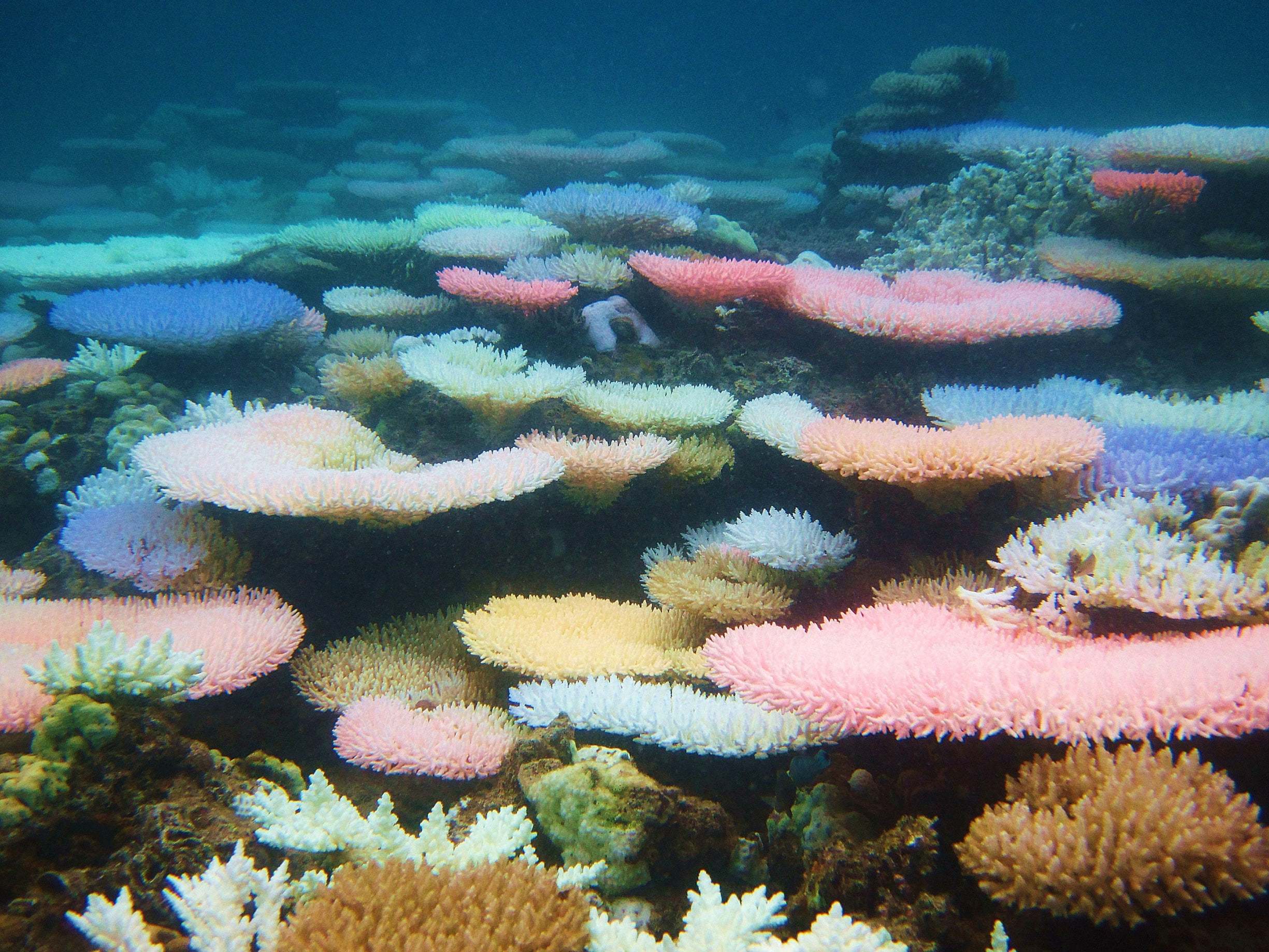This website uses cookies so that we can provide you with the best user experience possible. Cookie information is stored in your browser and performs functions such as recognising you when you return to our website and helping our team to understand which sections of the website you find most interesting and useful.

Colourful coral may look pretty but the vibrant hues belie a survival technique adopted by some that are fighting environmental changes.
In reef regions around the world, “colourful bleaching” is a recurring phenomenon and happens when corals are stressed by increases in ocean warming or lack of nutrients.
It is thought that corals turn vivid, neon colours when they are trying to recover life-sustaining algae, according to new research led by scientists from the University of Southampton.
Corals have a ”symbiosis”, mutually beneficial interactions, with minute algae called zooxanthellae that live in their cells. The algae get nutrients and carbon dioxide from the relationship while corals are supplied with energy from the products of photosynthesis.
A change in temperature, even by 1C, means the fragile symbiosis falls apart. Without the algae, the coral turns from healthy brownish coloor to a ghostly white in a process known as “coral bleaching“.
Without the algae, coral can starve and die off. Stripped of its live tissue, the coral’s limestone skeleton faces erosion from the environment.
In a mass bleaching event, as has been happening in recent months along stretches of Australia’s Great Barrier Reef, within a few years the reef can break down causing significant biodiversity loss.
However it has been discovered that bleached coral can transform itself and begin emitting a palette of neon colours. The new research, published on Thursday in the journal Current Biology, found that some coral produces its own “sunscreen” layer in order to attract algae to return.
Colourful bleaching can save some coral if the stress it is under is not too intense or prolonged. Dr Cecilia D’Angelo, Lecturer of Molecular Coral Biology at Southampton, who was part of the study, said: “Bleaching is not always a death sentence for corals, the coral animal can still be alive. If the stress event is mild enough, corals can re-establish the symbiosis with their algal partner.
“Unfortunately, recent episodes of global bleaching caused by unusually warm water have resulted in high coral mortality, leaving the world’s coral reefs struggling for survival.”
Climate change and “blast fishing”, a practice which stuns schools of fish and makes them easier to net, have decimated coral reefs around the world in the past 50 years. NASA reported that more than a quarter of the world’s reefs have been lost and another third are under threat of being wiped out in the next three decades.
While colour bleaching may save some coral, it’s far from a solution. For that, tackling global warming and improving the health of the world’s oceans is the only way, the scientists said.



 Africana55 Radio
Africana55 Radio 

